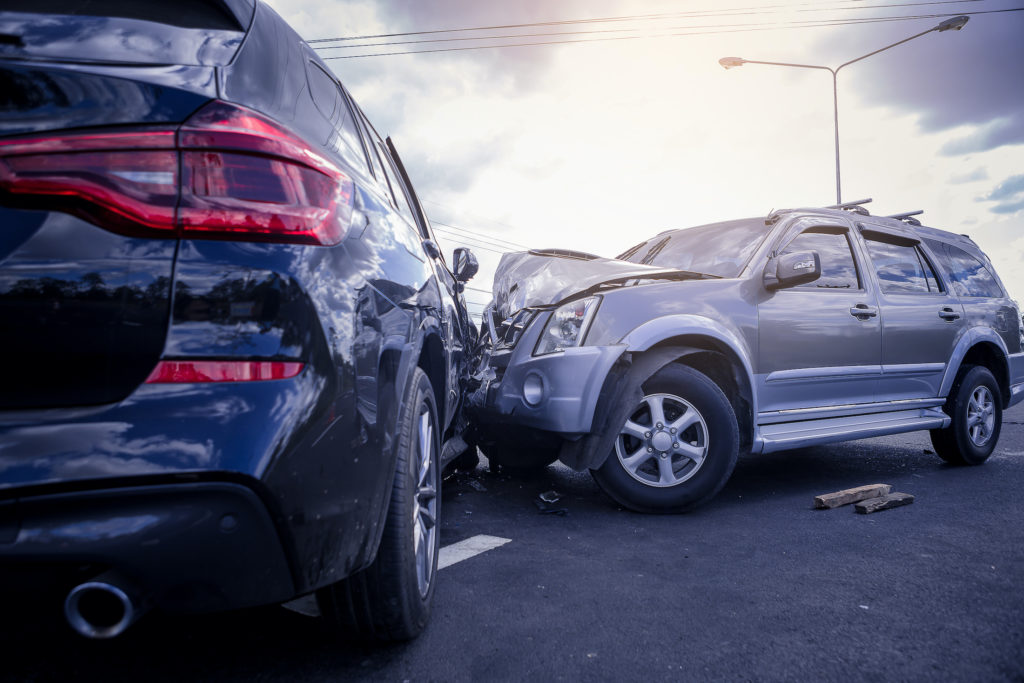- (435) 767-7144
- bill@sgpro.biz
- 230 N 1680 E, Bldg W - Suite 115 St. George, UT 84790
Service by Providence Insurance
If you own and drive a car, then you need to buy auto insurance for your vehicle. It is required in almost every state. So why does it seem so confusing in how and from whom to buy it? The options include calling a 800 number and buying it over the phone directly from an insurance company. It can be purchased over the Internet from hundreds of different websites. You can call a local insurance agent. You can probably even buy it at your bank or credit union. So which should you use?
Is it surprising that you can purchase it in so many different ways? There are hundreds of companies that sell auto insurance just in your area. How do they distinguish themselves? Some boast about their outstanding service when you have a claim. Others push how effortless it is to purchase from them. But, most often, insurance companies try to compete on price as if you were buying a car, a cell phone, or a soda.
Some people think auto insurance is simply a commodity. They are wrong; it’s not. You’re not buying a soda. You’re defending your financial security, and the choices you make could affect you for the rest of your life. Before describing how complicated auto insurance products are, we should discuss price. It’s really complex, too.
The most important thing for you to know about price is that NO Insurance Company Has the Lowest Price for Everyone.
No insurance company – no matter what it says in its advertising – has the lowest price for everybody in every location. There are some insurance companies that are frequently among the cheapest. And there are some that are generally among the highest. But no company is always the lowest for everyone.
Additionally, you should be aware that prices vary. Occasionally a company will “buy the market” and offer low prices to acquire new consumers; later, their rates gradually – or not so gradually – sneak up.

All companies have to change prices based on their losses, profitability, and many other factors.

Every insurance company has a unique appetite for the risks it is comfortable taking on. Some want only excellent drivers with no tickets or accidents. Other companies, believe it or not, really want bad drivers. In fact, those insurance companies specialize in insuring people with terrible driving records.
Some insurers focus on drivers who live in certain areas. There are companies that really like to do business in highly populated areas, while there are others that try to steer away from large cities.
Remember the saying that “you get what you pay for.” The lowest price may not give you or your family the protection you need. When you do have an accident or a claim – something that goes wrong – that is an awful time to find out that you don’t have enough protection!
Someone with a good driving history will pay three, five, even ten times less than a driver who has a couple of tickets, an accident, or who has been convicted of driving under the influence.
A person living in a major city – like Los Angeles, Atlanta, Dallas, or Denver – will probably pay three, four, even five times more than a similar person living in a rural area or small town, even though they both have the same driving record.
Contact us today to get a free auto insurance quote so you can stop paying for coverage that doesn’t fit your needs.
Until now, we have been talking about “auto insurance” as if it were a commodity. The reality is, you can buy a lot of insurance or a little. Almost every state requires you to have auto insurance, but they don’t require you to have much. In states that have a mandatory auto insurance law, all you are required to purchase is a small amount of liability coverage. This coverage is so you can pay for some of the damage your car does to other cars and the people not in your car.
In some of the states with mandatory auto insurance laws, the minimum insurance needed is liability coverage that gives
The minimum amount of insurance required by states is not enough. You should seriously consider getting more protection in order to protect your financial health. Note that mandatory auto insurance laws don’t require you to purchase coverage for your own vehicle, have coverage for your injuries, or coverage if you are hit by someone who doesn’t have insurance.
If you purchase just the minimum coverage required by law, you are putting yourself and your assets at considerable risk. If you are at fault in an accident that causes serious injuries to other parties, your car, home, savings, and retirement could be taken. And how far do you think $10,000 will go if you total somebody’s Lexus? Not far enough!
Many of those drivers who do have auto insurance don’t carry enough to pay for the injuries and damages that can result from a serious collision. You are taking a risk if you don’t have this coverage, which is often referred to as UM/UIM. This coverage can also provide help for your injuries if you are hit while walking or riding a bicycle by someone carrying inadequate or no insurance.
This coverage pays the medical and other expenses of people injured or even killed in accidents that are caused by you. This coverage is required by most states, often with a bare minimum coverage of $15,000 for any individual involved in an accident with you and no more than $30,000 for all the people in the accident.
It is possible to buy the bare minimum required by state law, say $15,000 per person, $30,000 per accident. Or, on the other end, you can purchase limits as high as $500,000, or $1 million. Just remember that any person you hit can sue you for all that you have.
If you own a home or stock and have a reasonable income, you should buy, at minimum, limits of $100,000 per person, $300,000 per accident. In fact, our agency standard for new customers is this limit. Although, if you have more than $300,000 in assets, you should purchase higher limits along with an umbrella policy.
This coverage is for the damage your car causes to property. Most often, that’s the other car or cars involved in the accident, but it will also cover damage you do to any object that you hit, like Garages, signs, buildings, power poles, fences, whatever. This is also required in most states, often with a minimum coverage of $10,000.
Several years ago, $25,000 was considered the maximum most people needed for this coverage. Not anymore. There’s a lot of $60,000, $75,000, even $100,000 cars and sport utility vehicles on the road these days.
With all of the super-expensive cars on the road today, you should seriously consider at least $100,000 of coverage.
This is for the damage done to your own vehicle when it crashes with other vehicles (your fault) or other objects (again, your fault). If you have an accident, how much can you afford to pay to have your car. Auto insurance policies have several deductible options to accommodate your budget.
It is the amount that you pay to fix the vehicle before your insurance kicks in. There are many deductible options including $100, $250, $500, even $1,000. The lower your deductible, the more that this coverage will cost.
It’s usually a good idea to have a deductible of at least a couple of hundred dollars, although the average is $500.
The deductible does not apply if you are hit by someone else and their insurance is paying for your repairs.
This is coverage for damage to your own car that results from something other than a collision with another car. Examples include destruction caused by vandals or a wind-blown tree hitting your car. It will also include coverage for theft.
Just like with collision, there is a deductible for comprehensive, although it can be lower. For example, if you have a $500 deductible for collision, your comprehensive deductible could be, say, $250.
While comprehensive and collision will pay for the damage or loss to your vehicle, neither will pay for everything in or on your car. Most auto insurance policies exclude things like CB radios, two-way radios, cell phones, tablets, and CDs.
Additionally, if you add special customization features to your vehicle, those things will most likely be excluded as well. It’s always a good idea to talk to your insurance agent about any special features or high-tech equipment that you have put in your vehicle.
Most of these add-ons are NOT covered in a standard auto insurance policy.
However, It is possible to get special coverage for those added special features or high-tech equipment in your vehicle. Your agent can tell you about your options.
This covers medical payments and even funeral expenses for you along with any other passengers that are in your car if it is in a collision, no matter who caused the accident. It will also cover you, as a pedestrian, if a vehicle hits you.
Some people choose not to purchase this coverage because they think that their health insurance will cover them. That is only partially true.
Medical payments coverage can compensate you for income that is lost as a result of the injuries that are suffered in an auto accident. Medical payment coverage, however, is not as comprehensive as most health insurance coverage. Even so, this coverage usually costs under $100 a year, which is certainly a good purchase for most people.
Additionally, medical payment coverage gives protection to passengers in your vehicle for income lost and medical expenses incurred. In some states, like Utah, medical payment coverage isn’t applicable. Those states have something called no-fault auto insurance systems.
Essentially, no matter who is at fault, your auto insurance company pays for the damage to your car and/or injuries that you incur. Personal injury protection, in these states, is integrated as part of your basic coverage.
This coverage pays for injuries to you and, in some cases, damage to your vehicle if you are hit by someone who doesn’t have insurance – or by a driver who doesn’t have enough insurance to cover your losses in whole. In most areas, more than 10% of drivers don’t have any coverage. In some areas, as much as 30% of motorists don’t have insurance.
It’s a good idea for most people to carry the same limits for UM/UIM as they have for bodily injury liability. Always remember that UM/UIM insurance coverage is for you.
It will pay for your injuries and the damage made to your vehicle if the person at fault in the accident with you is unable. Given that you created your liability coverage limit on what you are willing to lose with UM/UIM, you should do the same.